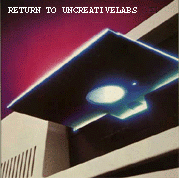| Author |
Message |
wdegroot
Joined: 03 Feb 2006
Posts: 488
Location: pennsylvanai

|
 Posted:
Fri Jan 02, 2009 5:08 pm Posted:
Fri Jan 02, 2009 5:08 pm |
  |
I would expect a 20 year old mfm drive to be flakey and would use it till it finally died
But I have some modern? eide drives and tested several, some are very strange and others smooth as silk.
One Maxtor was ok, put it in my wifes pc and it showed an error near track 1 or 2.
OOOPS.
put it in an empty system and tested it again., perfect! what can I believe, can i trust it?
I used super fdisk boot cd to set up and test
and a 98 boot cd to run scandisk.
anyone with experience with " less than new stuff"? |
|
|
   |
 |
Unknown_K
Joined: 22 Apr 2007
Posts: 264
Location: Ohio/USA

|
 Posted:
Sat Jan 03, 2009 3:17 am Posted:
Sat Jan 03, 2009 3:17 am |
  |
I use a free utility from seagate called seatools (they have an SCSI version and a IDE version). It comes on a bootable DOS based CDROM image and I have a machine with removable IDE and SCSI (50 pin) trays. So you boot from the cdrom and then test as many drives as you want cluster by cluster for ones that are unreadable.
I generally toss any IDE drives with more then a couple bad sectors, same with SCSI. It depends on age too, I cut old drives some slack (under 100mb) but anything newer just gets junked, most of the time drives have 100's of bad sectors (head crash) and are junk anyway.
For newer drives anything that fails SMART (the utility checks to see if the drive has it and if it has been tripped) gets tossed too.
All depends on how much your time is worth and any data you happen to create on the machine with a flacky drive. I don't want to mess with setting the same machine up again because the drive died, or losing whatever project I was working on.
I don't think many drives over 100mb are rare anyway, older ones could be. I don't have any MFM or ESDI (I use IDE and SCSI for everything) so I have no clue how to test those. |
|
|
  |
 |
|
|
